|
[VIEWED 391362
TIMES]
|
SAVE! for ease of future access.
|
|
|
|
|
|
JPEG

Please log in to subscribe to JPEG's postings.
Posted on 04-18-09 9:46
AM
Reply
[Subscribe]
|
Login in to Rate this Post:
1  ?
?  Liked by
Liked by
|
| |
Last edited: 11-Jun-09 09:12 AM
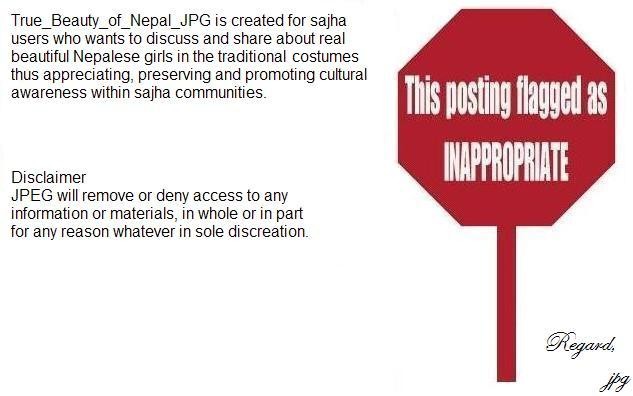
|
| |
|
|
|
|
JPEG

Please log in to subscribe to JPEG's postings.
Posted on 05-29-09 4:01
PM
Reply
[Subscribe]
|
Login in to Rate this Post:
0  ?
? 
|
| |
Appreciate the True_Beauty_of_Nepal. “I like men who have a future and women who have a pastâ€
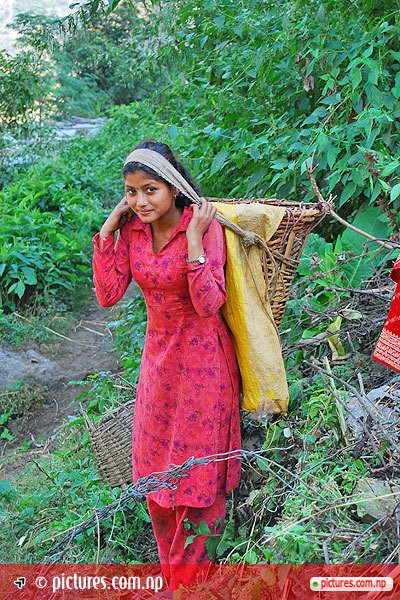
|
| |
|
|
snowfed_river

Please log in to subscribe to snowfed_river's postings.
Posted on 05-29-09 4:07
PM
Reply
[Subscribe]
|
Login in to Rate this Post:
0  ?
? 
|
| |
|
|
| |
|
|
JPEG

Please log in to subscribe to JPEG's postings.
Posted on 05-29-09 6:44
PM
Reply
[Subscribe]
|
Login in to Rate this Post:
0  ?
? 
|
| |
Mai Chhori Sundari ~ Beauty in kurta.

|
| |
|
|
JPEG

Please log in to subscribe to JPEG's postings.
Posted on 05-30-09 8:40
AM
Reply
[Subscribe]
|
Login in to Rate this Post:
0  ?
? 
|
| |
Beauty in Blue Saree.

|
| |
|
|
JPEG

Please log in to subscribe to JPEG's postings.
Posted on 05-30-09 12:27
PM
Reply
[Subscribe]
|
Login in to Rate this Post:
0  ?
? 
|
| |
Nepali beauty dancing at the Nepal’s first Republic Day. Nepal's first Republic Day was celebrated on Friday throughout the nation with various programs, exactly one year after the Constituent Assembly declared Nepal a republic on May 29, 2008 ending the 240-year old unpopular monarchy. In his last act before leaving his palace last year, Nepal's former king, Gyanendra, tried something he never attempted during his disastrous experiment with autocratic rule. He decided to call a press conference - and for dismayed royalists the ensuing scene encapsulated the fall of an ancient institution that had collapsed from within. Excited journalists climbed on the palace furniture. They posed for pictures  in the chair where Gyanendra would sit, flanked by two stuffed tigers. When the ex-king arrived they heckled him with the rudest  words in the Nepali language. Five years after sacking his first prime minister, three years after he used the army to seize absolute power, he had to go  . The king had seized power to defeat a powerful Maoist insurgency that was fueled by the poverty and injustice of village life. But while the royal army floundered against the rebels in the hills, republican protests swelled on the streets of the capital. A peace process led to elections earlier that year. The king - seen as a living god, and worshiped as an incarnation of Lord Vishnu  ???? - became just another commoner. The chief priest at the temple still recognizes the king and still goes to him to make offerings, although he has been told that he must stop. Gyanendra was the nation's religious leader, as well as its would-be ruler. It was his duty to preside at the rituals which keep Nepal in harmony with its gods. One of those gods is Chanira Bajracharya,  ??? the 13-year-old living goddess of Patan who is worshiped as an incarnation of the goddess Telaju  . Every year the king would come and make an offering of rice and coins at her feet. Now, the 240-year-old monarchy is left behind Nepal is the newest republic in the world. That's the true_beauty_of_Nepal. And when there is equality and peace, progress will follow. Now that is absolutely true_beauty_of_Nepal.
Last edited: 30-May-09 12:46 PM

|
| |
|
|
JPEG

Please log in to subscribe to JPEG's postings.
Posted on 05-30-09 1:24
PM
Reply
[Subscribe]
|
Login in to Rate this Post:
0  ?
? 
|
| |
Bhattarai ni beauty
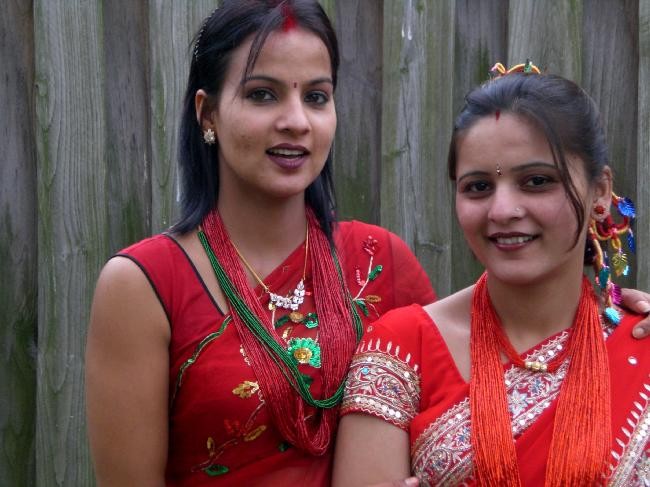
|
| |
|
|
JPEG

Please log in to subscribe to JPEG's postings.
Posted on 05-30-09 7:06
PM
Reply
[Subscribe]
|
Login in to Rate this Post:
0  ?
? 
|
| |
And i will do continue posting the True_Beauty_of_Nepal. Thank you for supporting me and appreciating the true beauty of Nepal. Here's another one for you folks. jpg

|
| |
|
|
JPEG

Please log in to subscribe to JPEG's postings.
Posted on 05-31-09 10:10
AM
Reply
[Subscribe]
|
Login in to Rate this Post:
0  ?
? 
|
| |
Simply Beautiful
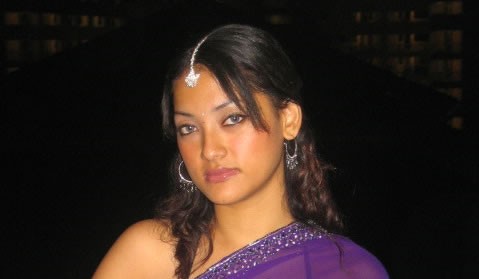
|
| |
|
|
JPEG

Please log in to subscribe to JPEG's postings.
Posted on 05-31-09 8:00
PM
Reply
[Subscribe]
|
Login in to Rate this Post:
0  ?
? 
|
| |
Holi Beauty or Beauty of Holi. You decide folks! The Hindu festival of Holi which honors the mythical demoness Holika is associated with intense color and general frivolity. Every day of the March festival is inspired by a particular color, with the final evening culminating in a riotous celebration of every shade. During the days prior to the final celebration, a pole is installed in the street made of bamboo and cloth. This is a ceremonious installation which represents the mythical tale of a king who used to hang his maid's garments high up in the air when they were bathing. Another name commonly used for the festival is Phagu, linking it to the sacred red powder that Hindus smear on their face. Bonfires are also common during Holi and the King's pole, along with various other artifacts, are burned on the final night. Many youth groups organize special Holi outings and commonly throw water balloons and colored powders at passers-by, all of which is generally acknowledged as being part of the fun!
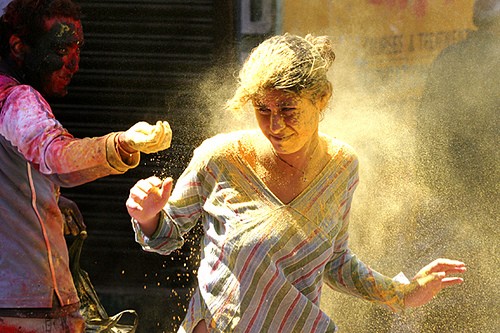
|
| |
|
|
JPEG

Please log in to subscribe to JPEG's postings.
Posted on 06-01-09 12:13
PM
Reply
[Subscribe]
|
Login in to Rate this Post:
0  ?
? 
|
| |
Tharu ni beauty.
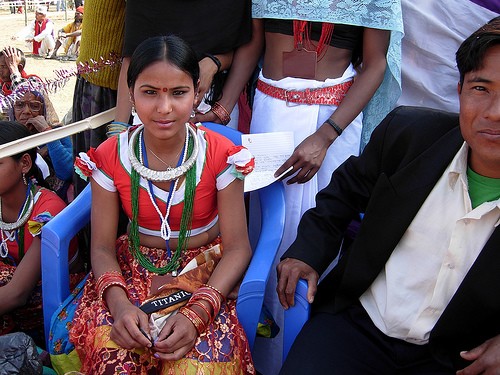
|
| |
|
|
JPEG

Please log in to subscribe to JPEG's postings.
Posted on 06-01-09 1:55
PM
Reply
[Subscribe]
|
Login in to Rate this Post:
0  ?
? 
|
| |
A forgotten beauty of Thami ni Thangmi, Thami, Thani? Remembering A Forgotten People
Introduction to Thami There is no idea about the origin of the Thami community or the term 'Thami'. Their history is indeed obscure. Neither the scanty literature that is available on them nor their own traditions speak enough about their history and culture … the Thamis speak Nepali among themselves and with outsiders. It is not known whether or not they had any dialect of their own. — Singh (1993: 184) The above quotation, taken from K. S. Singh's People of India: Sikkim, is sadly indicative of the state of research on one of South Asia's most interesting and least-known ethnic groups. The Thangmi are a Tibeto-Burman community most likely indigenous to the districts of Dolakha and Sindhupalcok in Nepal, and with small immigrant communities in 16 other districts of Nepal as well as Darjeeling and Sikkim in India. Over the past several years, scholars whilst working and living with the Thami, have slowly beginning to unfold the mystery for it has struck time and time again that there was next to nothing written in English about them. Whilst the scholars own research is largely academic, in the fields of descriptive linguistics and comparative ethnography, they felt that it was time to set the record straight and to locate the Thangmi in their socio-cultural context within the nation. This short article is a start in rectifying the lack of published work on one of Nepal's important and overlooked ethnic groups. Although the scholars addressed every aspect of Thangmi culture in detail, they had focus on the defining characteristics of the group as a whole, dealing with such issues as population size, language, religious practice and cosmology. Thamis are mainly found in Suspa, Chhemawati, Khopachagu, Alampu, Bigu, Kalinchok, Lapilang and Lakuri Danda villages of Dolkha District. Numbering about 30,000 in all, the Buddhist Thamis are considered the original people of these places. The Thami language is similar to the language of the Sunuwars, which again conforms to the Rai language originating in the Tibeto-Burman family. Tamang influences are also quite prominent on the Thamis. Labor and farming are the Thamis' main occupations. In religious matters, Thamis are much closer to the Tamangs. Almost 90 percent Thamis are surviving below poverty line and 78 percent are illiterate. Their population, according to Census 2001, is 22,999(NEFIN). According to their mythology, based on their oral tradition or on their religious texts, ‘Paloke', they are the successors of Yapati Chukku and Sonari Aaji who reached the head of Tamakoshi, while travelling in ancient times, from Simangadh (Simroungadh). They scattered all round from Rangrangthali of Suspa in Dolakha (Thami and Others, BS2057). According to one mythology they often relate, of the successors of Kiratis entering the Koshi area, those tracing along the Tamor river became Limbus, those tracing along the Arun became Rais, those tracing along Dudhkoshi became Sunuwar, those tracing along Sunkoshi became Hayu and those tracing along Tamakoshi became Thamis. A notable number of Thamis are found in Sindhupalchowk and Ramechhap disticts today. Although they are found in small numbers in other districts of the country, their numbers are significant in districts, including Ilam, Jhapa, Morang, Sunsari, Bhojpur, Udayapur, Khotang, Sindhuli, Chitwan, Bara, etc. Thamis call themselves Thangmi. Thangmi means ‘people of pastureland' or ‘people living in borderlands' (Turin, 2000). Thamis have their own language called Thangmi Kham, which belongs to the Tibeto-Burman family of languages. While there is slight difference between ‘Paloke' language and their spoken language, there are some subbranches in the Thangmi Kham spoken in Dolakha and Sindhupalchowk. The culture and tradition of Thamis is unique. A newborn is christened in seven days if it is a boy and in five days if it is a girl. The Jhankri conducts the whole process of the naming ritual. Marriage is done by asking the girls parents and the practice of elopement is also prevalent. In any case certain customs need to be observed. Jhankris or Dhamis complete the rites of marriage by citing the texts of ‘Paloke'. The dead ones are cremated in hills or mounds. The death rites called ghewa is performed after three days. A larger ghewa is performed with special arrangement after sometime. The death rites are officiated by Jhankris. Thamis are the followers of neither Hinduism nor Buddhism in complete sense. They are rather close to the followers of Kirat religion and are worshippers of nature (Thami, et al, ibid). Their sacred book, Paloke, is based on verbal traditions. The performers of religious rites are Jhankris and Dhamis. Bahrara Dewa (family diety), Bhume, etc are some of the several other deities of Thamis. There are evidences of Thamis having Kipat land which ended with the process of unification of Nepal. Today they have only an insignificant amount of land with them. Majority of them have become landless. Although their main occupation is agriculture, most of them are dependent on wage labour. Besides agriculture, animal husbandry, masonry, carpentry, bamboo work, weaving bhangro (a coarse woolen cloth) and cotton clothes, wool work, collecting herbs are their occasional occupations.
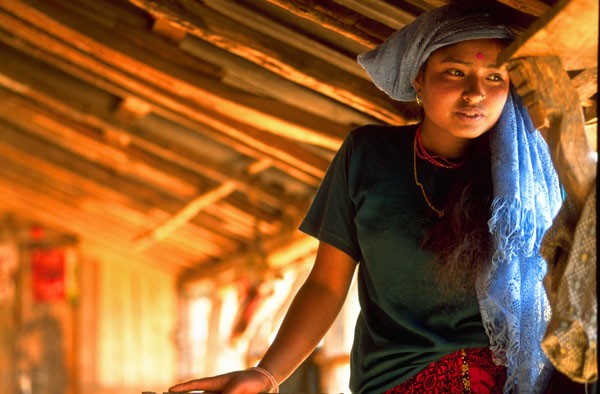
|
| |
|
|
JPEG

Please log in to subscribe to JPEG's postings.
Posted on 06-01-09 6:27
PM
Reply
[Subscribe]
|
Login in to Rate this Post:
0  ?
? 
|
| |
Newar ni beauty.
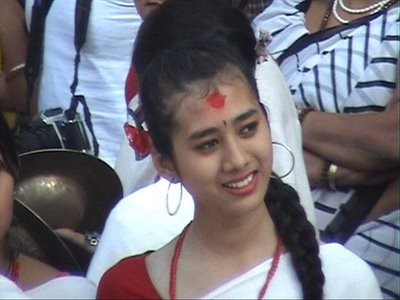
|
| |
|
|
JPEG

Please log in to subscribe to JPEG's postings.
Posted on 06-02-09 9:21
AM
Reply
[Subscribe]
|
Login in to Rate this Post:
0  ?
? 
|
| |
Nepali pretty “Life may not be the party we hoped for, but while we're here we should dance.â€

|
| |
|
|
JPEG

Please log in to subscribe to JPEG's postings.
Posted on 06-02-09 4:26
PM
Reply
[Subscribe]
|
Login in to Rate this Post:
0  ?
? 
|
| |
Kirat Ni Beauty taken in 1890. The Kirat community is counted among the world's ancient communities. The mention of it can be found in the Rig Veda too. The Kirats had created their own civilised society before the Aryans reached Sapta Sindhu, and was ruled by their leader Shambar. But after losing all their territories, in the 40 years of long war, they headed in search of new lands. According to Early Races of Mankind by Sir John Hammerton, Vol. I, page 434, when the Aryans came to India for the first time and started to advance towards the hilly regions, they had to fight against a Kirat-Ashur king whose kingdom was situated on the bank of river Indus in the Himalayas. His name was Shamba Ashur. He was defeated in the battle, so he left his place and came towards the east and established a stronghold in the Kinner land which is now known by the name of Himachal Pradesh in India. In this place, a horde of Mongolian people came and intermingled with this stock of Kirat people and constituted one big Kirat race. Gradually they spread towards the east and resided in the Himalayan region of Nepal, Sikkim and India. They usually speak in Tibeto-Burman language style as that of Newar, Magar, Gurung, Murmi, *Sunar, Lepcha and Toto and also in the style spoken in East Nepal by Dhimal, Thami, Limbu, Yakkha, Khambu and Hayu. The Kirats' lifestyle and their cultural activities are all governed by Mundhum. Mundhum is the folk- literature of the Kirats' and is one of the world's most beautiful epic, which has been passed from time immemorial through verbal tradition. In Mundhum, the knowledge of the universe received by their forefathers, the beginning of life on earth, the heroic deeds of their forefathers as human, and their extraordinary works as above human, have been stored. Points to be taken: * "The Kirat are mentioned in Indian epic drama such as the Mahabharata. According to Nepalese traditions, they occupied the Kathamndu Valley(Nepal) before the Licchavi dynastry just prior to and during the years of the Chraistian era (Regmi 1969: 54-64). Nowadays the ethnic groups going by this name live in eastern part of Nepal: the Rais, Limbus, and Yakhas. The Sunuwars also claim to be Kirat. Shafer has shown that the Sunuwar dialect closely resemblences certain Rai dialiect (Shafer: 1953: 356-374). A large number of Sunuwars, when living in the capital or in India, abandoned their Sunuwar name for that of Kirat, as many people believe that they belong to the polluted "occupational caste" of the goldsmiths (Sunar) (see Mcdonald 1970:146, fn.23)" ~ Himalayan Anthropology, Page 174 By James F. Fisher
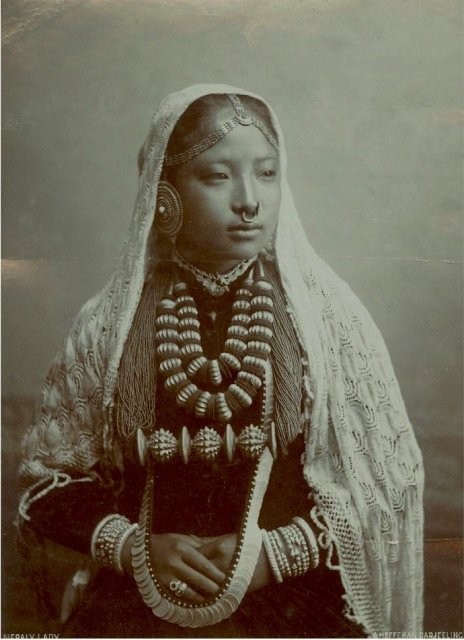
|
| |
|
|
Nepe

Please log in to subscribe to Nepe's postings.
Posted on 06-02-09 6:51
PM
Reply
[Subscribe]
|
Login in to Rate this Post:
0  ?
? 
|
| |
Here is how an artist's eye would see.
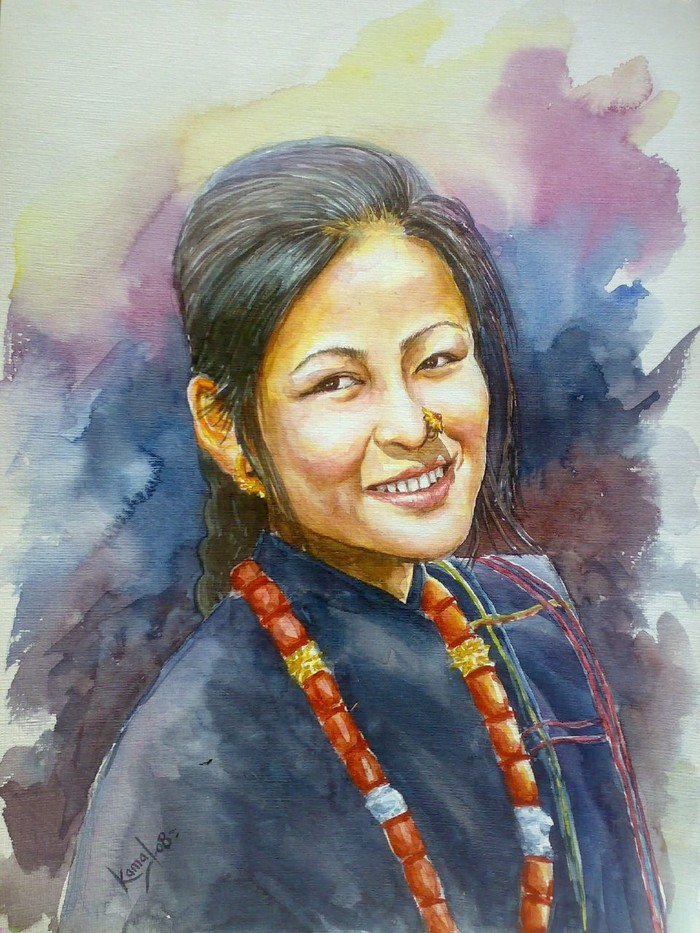
|
| |
|
|
Nepe

Please log in to subscribe to Nepe's postings.
Posted on 06-02-09 6:54
PM
Reply
[Subscribe]
|
Login in to Rate this Post:
0  ?
? 
|
| |
Kumari beauty.. Artist of both works: Kamal Gurung.
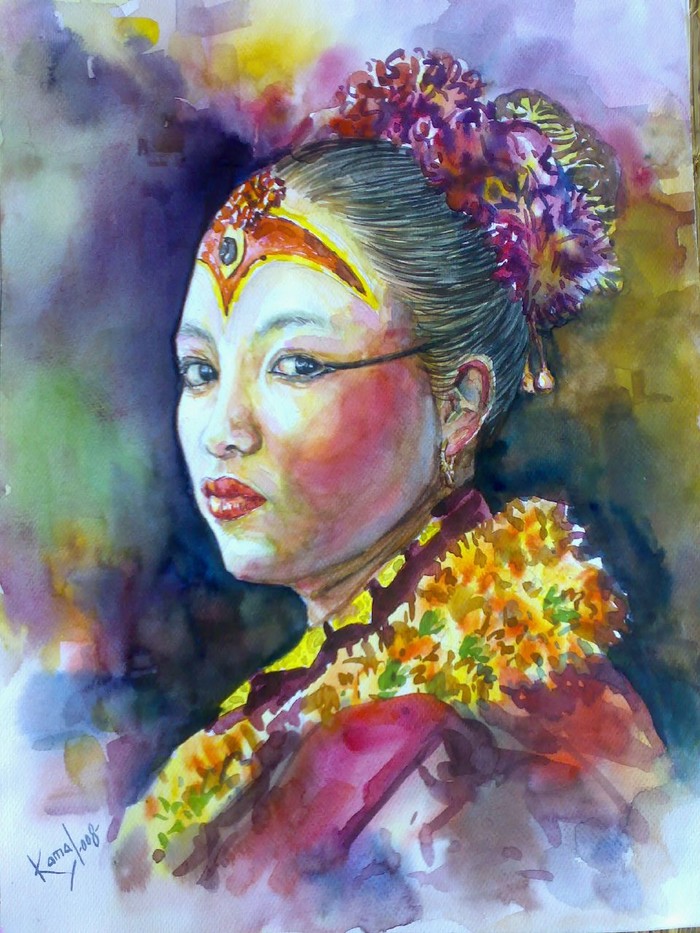
|
| |
|
|
Nepe

Please log in to subscribe to Nepe's postings.
Posted on 06-02-09 6:57
PM
Reply
[Subscribe]
|
Login in to Rate this Post:
0  ?
? 
|
| |
.
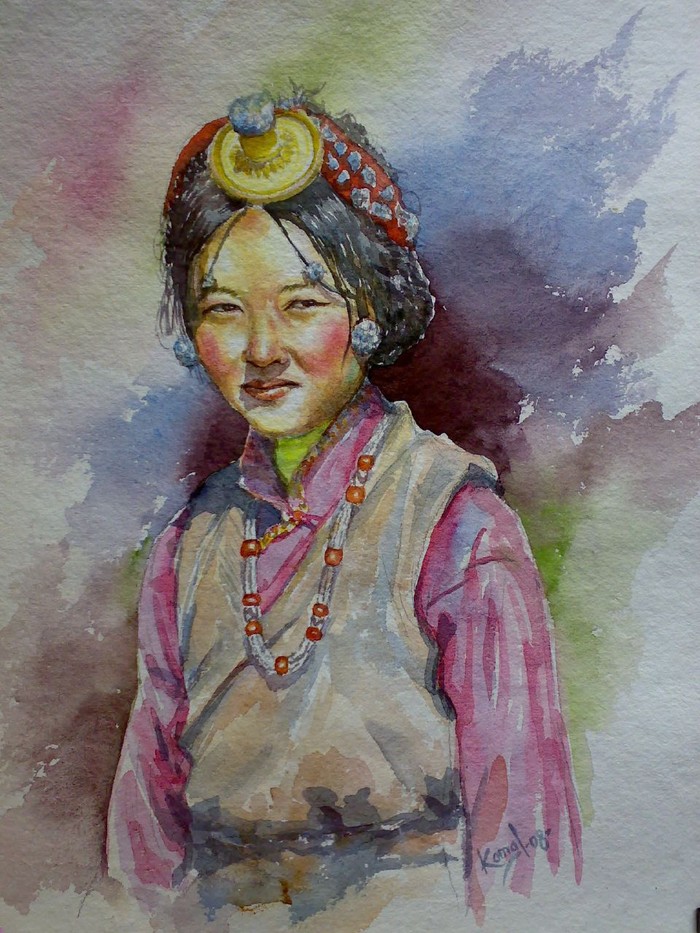
|
| |
|
|
Nepe

Please log in to subscribe to Nepe's postings.
Posted on 06-02-09 7:10
PM
Reply
[Subscribe]
|
Login in to Rate this Post:
0  ?
? 
|
| |
A smaile that wins the world...
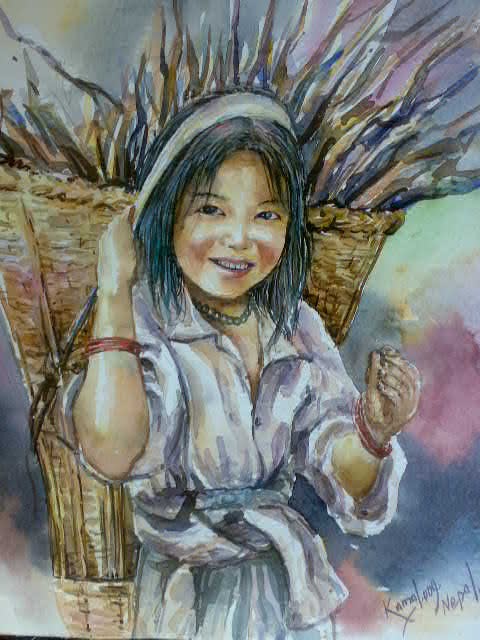
|
| |
|
|
JPEG

Please log in to subscribe to JPEG's postings.
Posted on 06-03-09 10:13
AM
Reply
[Subscribe]
|
Login in to Rate this Post:
0  ?
? 
|
| |
Kirat Nis Beauty. Actually what actually is Kirat?
Because the Kiratas are the oldest inhabitants of ancient India and find references in Veda and other ancient doctrines, scholars have studied the term Kirat and found that the root of Kirat goes back even further as far as the history of the Ashur people and originating from Babylon makes it even more interesting and significant. The term Kirat is a corrupt form of Kiriat, Kiryat or Kirjath which means a fort or town in Moabite language of the Mediterranean region. When their number increased, they built many forts and towns and called them Kiriat-hime, Kiryat-yarim, Kirjath-arba, Kiryat-baal, Kiryat-hujro, Kiryat-sanna and Kiryat-sapher which indicate the meaning of the town or fort of the forest, or the town of the god Baal, or the town of books, or the town of palm trees. The residents of the above noted towns started calling themselves, “Kereti†which later on became Keretite or the Kerite tribe. The ancestors of this tribe if identified, comes to Nahor; the younger brother of Abraham, a resident of Ur in Babylon. He belonged to the Semitic family. When the Hebrew people under the leadership of Moses, invaded their country, they were defeated and expelled from their native land. The Kereti people then led a nomadic life and spread towards the eastern and north-eastern countries. In 2400 BC, a branch of which came to Mesopotamia or the Assyrian country, intermingled with the Ashur people and formed one nation with them. Later on they migrated to Northern India and the Himalayan region via Media(NW Iran)and Nisa(Turkmenistan) of Northern Persia with the title of the Kirat-Ashur tribe led by Shambar Ashur. But in Nisa they were called Khambos or Yavan and claimed their descent from the Greeks of the Ionian island. In the Sanskrit book of Yogini Tantra, the Kirat nationality is included among the Yavan, Pallava, Koch. The Greeks had also known the Kirats by the name of Kirhadai. The last remnant of the ancient Kiratite or Cherethite tribe was found recorded in the book of 2 Samuel, 15 - 18. They were a martial tribe during the reign of the Syrian King David in 1049 BC. ~Prachin Bharat ka Rajnitic aur Sanskritik Itihas by Rati Bhanu Singh Nahar, page 231 Sir John Hammerton in his book called “Early Races of Mankind", mentions that probably in the 4000 BC, there was a civilized race of mankind on the lower Euphrates of the Mediterranean region described as Mongolian or Summerian of the Cheldean. They had their own independent forts or towns. They used to fight for their border line and had erected an inscribed stone pillar of agreement in the middle of their boundaries. The defeated town never agreed to live under their enemies. They used to quit their native place for good and migrate to other countries. In like manner, in about 3000 BC, a big horde of people left their native place and came to the east and established the Chinese Empire. There is no doubt that the Kirat-Ashur people came to North India earlier than the Aryans yet they had known them very well in Persia. ~HISTORY OF THE KIRAT PEOPLE (2003)
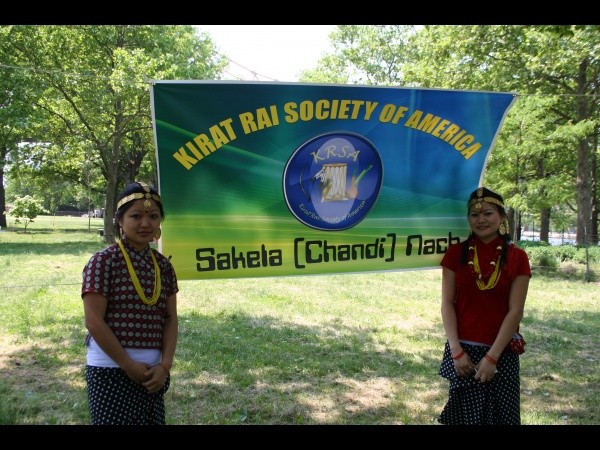
|
| |
|
|
JPEG

Please log in to subscribe to JPEG's postings.
Posted on 06-03-09 2:45
PM
Reply
[Subscribe]
|
Login in to Rate this Post:
0  ?
? 
|
| |
Maithili ni beauty Maithili is an Indo-Aryan language that is spoken by the people of North- Eastern Bihar and Nepal. The language has been named Maithili because it is spoken in the ancient land of Mithila. It is also called Tirhutia because Tirhut is another name of the same region, which is derived from Tirabhukti, which means the bank of the river purified thrice by the sacrifices. An Italian scholar named Amaduzzi in his book Alphabetum Brahmmanicum (1771A.D.) has mentioned this language as Maitili. Maithili also flourished in the court of Kings of Nepal, during Malla period. Several dramas, anthologies of lyrical poems, songs, and inscriptions in Maithili are available in Nepal of this period. During the last 150 years the foreign scholars like Colebrooke (1801), Hoernle (1880), Grierson (1881), Kellog (1893) and others have studied Maithili's grammar, phonology, lexicography, historical surveys, and comparative linguistics. These scholars along with Indian linguists like Dr. Suniti Kumar Chatterji and Mahapundit Rahul Sankrityayan have declared Maithili as a full fledged independent language which has originated from Sanskrit-Prakrit, Magadhi-Prakrit, Apabhramsa, to Avahatta, Protomaithili and then developed into the formation of modern Maithili. Note to be taken: Hindi zealots time and again claim that the language is a dialect of Hindi having no independent entity despite strong evidence to its contrary. It is a well-known fact that the history of Maithili literature is more than a millennium years old whereas that of Hindi literature has a history of barely 200 years since Bhartendu Harishchandra. It should not be forgotten that Maithili belongs as much to dalits, Muslims, and people belonging to lower caste as much as it belongs to persons of upper castes. The ballads and other folk tales like Lorik, Nayaka Banjara, Salhes, Deenabhadri, Rayaranpaal, etc. have been preserved by these so-called dalits and lower castes since the time immemorial by memorizing and singing traditionally. These are as important contribution to the Maithili literature as are the writings of upper caste. See Mithila Script Mithilakashar

|
| |
